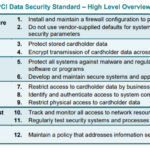In our digital age, it’s important to acknowledge the potential environmental consequences of our daily activities. One such activity that often goes unnoticed is running antivirus software. While we rely on these programs to protect our devices from cyber threats, have you ever stopped to consider the environmental impacts they may have? From energy consumption to the generation of electronic waste, the use of antivirus software can have far-reaching effects on the planet. Let’s explore these impacts and uncover the hidden ecological footprint of our digital protection.
Understanding Antivirus Software
What is antivirus software?
Antivirus software is a computer program designed to detect, prevent, and remove malicious software, also known as malware, from electronic devices such as computers and smartphones. It acts as a defense mechanism against various online threats, including viruses, worms, Trojans, and spyware.
The role of antivirus software in cybersecurity
Antivirus software plays a crucial role in maintaining cybersecurity by defending against malware and protecting users’ sensitive data. It continuously scans files, emails, websites, and other digital content for potential threats, identifying and eliminating any malicious code that may harm the user’s device or compromise their personal information.
Antivirus software not only provides real-time protection but also offers additional security features such as firewalls, web shields, and email scanning. These features help prevent unauthorized access, block malicious websites, and filter out phishing emails, reducing the risk of falling victim to cyberattacks.
The widespread usage of antivirus software
Given the rising threat landscape and the increasing reliance on digital technologies, the usage of antivirus software has become prevalent worldwide. In today’s interconnected world, where online activities are an integral part of our lives, antivirus software has become a necessity.
From individual users to large organizations, antivirus software is used to safeguard personal and business devices, protecting sensitive data from data breaches and financial loss. With the constant evolution of malware, antivirus software developers strive to keep up with emerging threats and provide effective protection to their users.
The Energy Consumption of Antivirus Software
How antivirus software consumes energy
Antivirus software, like any other computer program, requires energy to function effectively. It runs continuously in the background, scanning files, monitoring network traffic, and performing regular updates to stay ahead of new malware threats. This constant activity consumes significant amounts of processing power, which translates into energy consumption.
The consumption of energy by antivirus software can vary depending on factors such as the complexity of the scanning algorithms, the frequency of updates, and the overall efficiency of the software. As the software scans all files and processes running on a device, it demands computing resources, leading to increased energy consumption.
The link between software efficiency and energy use
The energy required to run antivirus software can be influenced by its efficiency. Well-optimized software that utilizes system resources effectively can reduce energy consumption compared to software that is sluggish or resource-intensive.
Efficient antivirus software focuses on minimizing unnecessary background processes, optimizing scanning algorithms, and using intelligent resource allocation techniques. By ensuring that the software operates with minimal impact on the system’s performance, energy consumption can be reduced while maintaining effective protection against malware.
Comparative analysis of energy consumption in different antivirus software
To evaluate the energy consumption of different antivirus software, comparative analysis studies can be conducted. These studies assess the energy usage of various software solutions under controlled experimental conditions.
By measuring the energy consumed during different activities like scanning, updating, and idle states, researchers can determine which antivirus software is more energy-efficient. Such analyses are essential for both software developers and consumers as they provide insights into the environmental impact of different antivirus choices and encourage the adoption of more energy-friendly solutions.
The Electronic Waste Produced from Running Antivirus Software
How outdated antivirus software contributes to e-waste
The rapid advancement of technology and the frequent release of new versions of antivirus software often render older versions obsolete. Outdated antivirus software can become incompatible with the latest operating systems, lack essential security updates, or fail to meet the evolving threat landscape’s demands.
When users persistently run outdated antivirus software, they not only expose themselves to increased security risks but also contribute to electronic waste creation. As they upgrade to newer devices or software versions, the old software becomes obsolete and is discarded, ending up in landfills or e-waste recycling centers.
The lifecycle of antivirus software and electronic waste
The lifecycle of antivirus software contributes to the generation of electronic waste. From the production of the software, which involves the extraction and processing of raw materials, to its distribution and consumption, there are multiple stages where waste is generated.
When users discard old devices or uninstall obsolete antivirus software, the resulting electronic waste contains valuable and hazardous components that require proper disposal. Without appropriate e-waste management practices, such as recycling and responsible disposal, these components can harm the environment and human health.
The impact of regularly updating antivirus software on e-waste generation
Regularly updating antivirus software can help minimize electronic waste generation. By keeping the software up-to-date, users extend its lifespan, reducing the need for frequent replacements or upgrades. This, in turn, reduces the amount of e-waste generated as users can continue using their devices and software for a longer duration.
Software developers also have a significant role to play in reducing e-waste. By designing software that is compatible with a wide range of devices and operating systems, they can ensure that users can update their antivirus software without the need for entirely new installations or replacements, reducing the associated environmental impact.
The Environmental Footprint of Digital Technologies
The overall impact of software on the environment
Digital technologies, including software, have an increasingly significant environmental footprint. From the energy consumed by data centers to the extraction of raw materials for hardware production, every aspect of the digital ecosystem has an impact on the environment.
The use of software contributes to greenhouse gas emissions, resource depletion, and electronic waste generation. As software usage continues to grow, it is crucial to address the environmental consequences and identify ways to minimize this footprint.
How antivirus software contributes to this footprint
Antivirus software, although vital for cybersecurity, contributes to the environmental footprint of digital technologies. The energy consumption associated with running antivirus software adds to the overall energy usage of electronic devices, indirectly increasing greenhouse gas emissions.
Moreover, the lifecycle of antivirus software, as discussed earlier, leads to the generation of electronic waste, contributing to the growing e-waste crisis globally. Addressing the environmental impact of antivirus software is essential to ensure the sustainable use of digital technologies.
Ways to minimize digital technologies’ environmental impact
To minimize the environmental impact of digital technologies, including antivirus software, various strategies can be employed:
-
Energy Efficiency: Software developers can focus on optimizing their applications to reduce energy consumption. This can be achieved through efficient coding practices, minimizing background processes, and utilizing power-saving features.
-
Lifecycle Management: Encouraging users to update their software regularly, promoting compatibility across different devices and operating systems, and supporting software upgrades rather than complete replacements can reduce electronic waste generation.
-
Responsible Disposal: Promoting responsible e-waste management practices, such as recycling old devices and software components, ensures that valuable materials are recovered, and hazardous substances are disposed of safely.
-
User Education: Raising awareness among users about the environmental impact of running software and providing guidance on sustainable software choices can empower individuals to make more environmentally friendly decisions.
Understanding the Concept of ‘Green’ Computing
What does ‘green’ computing mean?
‘Green’ computing, also known as sustainable or eco-friendly computing, refers to the practice of designing, manufacturing, and using computer systems and software in an environmentally responsible manner. It aims to minimize the environmental impact of technology while maximizing its benefits.
‘Green’ computing encompasses various aspects such as energy efficiency, resource conservation, waste reduction, and the use of renewable energy sources. It emphasizes the importance of sustainability, both in the production and use of computing technologies.
How ‘green’ computing reduces environmental impact
‘Green’ computing reduces the environmental impact of computing technologies by adopting sustainable practices. By optimizing energy usage, promoting responsible e-waste management, and reducing resource consumption, ‘green’ computing strives to minimize the negative consequences associated with technology.
Efficient utilization of computing resources, such as power-saving features and intelligent resource allocation algorithms, can significantly reduce energy consumption. Additionally, promoting the reuse, recycling, and proper disposal of electronic devices and their components helps reduce e-waste generation.
The role of software, including antivirus, in ‘green’ computing
Software, including antivirus software, plays a vital role in ‘green’ computing. By developing energy-efficient algorithms, optimizing scanning processes, and minimizing system resource usage, antivirus software can contribute to reducing the overall energy consumption of computer systems.
Furthermore, regular software updates and compatibility across different devices and operating systems enable users to extend the lifespan of their devices and software, reducing the need for frequent hardware replacements or software upgrades. This, in turn, leads to a more sustainable use of computing technologies.
The Role of Software Developers in Reducing Environmental Impact
How developers can create more energy-efficient software
Software developers can contribute to reducing the environmental impact by incorporating energy-efficient practices into their development processes. Some ways in which developers can create more energy-efficient software include:
-
Optimization: Developers can optimize code and algorithms to use system resources more efficiently, ensuring that processes run with minimal impact on energy consumption.
-
Power Management: Utilizing power-saving features, such as sleep or hibernate modes, when the software is not in use can help reduce energy usage during idle periods.
-
Resource Allocation: Designing software that intelligently allocates computing resources, such as CPU usage and memory usage, can minimize energy consumption without compromising performance.
-
Collaborative Efforts: Engaging in collaborative efforts with hardware manufacturers and operating system developers to ensure software-hardware compatibility and leverage hardware-specific energy-saving features.
The responsibility of software companies towards environmental sustainability
Software companies have a significant responsibility in promoting environmental sustainability. By incorporating ‘green’ computing principles into their development processes, they can lead the way in reducing the environmental impact of software.
Software companies can prioritize energy-efficient software design, provide regular updates to enhance compatibility, and actively educate users about the environmental consequences of software usage. By adopting sustainable practices, they can play a critical role in minimizing the environmental footprint of their products.
Case studies of developers prioritizing ‘green’ practices in antivirus software development
Several developers have recognized the importance of prioritizing ‘green’ practices in antivirus software development. Some notable examples include:
-
Symantec: Symantec, a leading cybersecurity company, has focused on energy efficiency in their Norton antivirus software. They have implemented features like Power Saving Mode, which optimizes scanning activities based on the device’s power source and battery level, resulting in reduced energy consumption.
-
Avast: Avast, a renowned antivirus software developer, has developed a feature called Smart Sleep Mode. This feature intelligently adjusts system settings to optimize power usage during periods of inactivity, thereby reducing energy consumption while maintaining system security.
These case studies highlight the commitment of software developers towards reducing the environmental impact of their antivirus software through innovative solutions and sustainable practices.
Consumer Awareness and Action
The relevance of consumer choices in environmental impact
Consumer choices play a vital role in determining the environmental impact of antivirus software and other digital technologies. By making informed choices, consumers can contribute to sustainability by selecting software solutions that prioritize energy efficiency and responsible e-waste management.
By considering the environmental impact of software before making a purchase or downloading an application, consumers can influence the market demand for sustainable software. Being aware of the consequences of their choices empowers consumers to make environmentally friendly decisions.
How consumers can choose more sustainable software options
To choose more sustainable software options, consumers can consider the following factors:
-
Energy Efficiency: Look for antivirus software that is designed to minimize energy consumption, such as those with power-saving features or resource optimization techniques.
-
Compatibility: Select software that supports a wide range of devices and operating systems. This ensures that updates can be installed without requiring frequent replacements, extending the lifespan of devices and reducing e-waste.
-
Software Updates: Choose software that offers regular updates and security patches. This ensures that the software remains effective against evolving threats and reduces the need for complete software replacements.
-
E-Waste Management: Research software companies’ e-waste management policies to ensure they prioritize responsible disposal and recycling of outdated software versions and devices.
Initiatives promoting consumer awareness in digital environmental footprint
Various initiatives aim to promote consumer awareness regarding the environmental footprint of digital technologies, including antivirus software. These initiatives educate individuals about the importance of making sustainable choices and provide resources for evaluating the environmental impact of different software options.
For example, eco-labels and certifications can help consumers identify software solutions that meet specific environmental criteria. Additionally, campaigns and awareness programs led by environmental organizations and industry associations can provide valuable information and guidance to consumers, encouraging them to consider the environmental impact of their software choices.
Policy and Regulation
The role of policy in reducing software’s environmental impact
Policy and regulation play a crucial role in reducing the environmental impact of software. Governments and regulatory bodies can enact laws and regulations that promote sustainable practices in software development, distribution, and usage.
By setting energy efficiency standards, incentivizing software companies to adopt ‘green’ computing practices, and promoting responsible e-waste management, policy frameworks can encourage the adoption of sustainable software solutions. Additionally, policies can support research and development efforts aimed at minimizing the environmental footprint of digital technologies.
Existing regulations on energy consumption and electronic waste
Several existing regulations address energy consumption and electronic waste management, laying a foundation for reducing the environmental impact of software:
-
Energy Star Program: Implemented by the U.S. Environmental Protection Agency (EPA) and the Department of Energy (DOE), the Energy Star program sets energy efficiency standards for electronic devices, including computers and software. Software developers can participate in the program to highlight the energy efficiency of their products.
-
Waste Electrical and Electronic Equipment (WEEE) Directive: Implemented in the European Union, the WEEE Directive aims to reduce electronic waste by obligating manufacturers to take responsibility for the collection, recycling, and proper disposal of electronic products. Software companies can ensure compliance with WEEE requirements when developing and distributing their products.
Proposals for future policies on software’s environmental footprint
To address the ongoing environmental challenges associated with software, several proposals can be considered for future policies:
-
Eco-Design Directive: Introducing an Eco-Design Directive specific to software could ensure that energy efficiency and other environmental considerations are integrated into the design and development processes. This would enable software developers to prioritize sustainability from the early stages of product development.
-
Extended Producer Responsibility (EPR): Expanding EPR regulations to cover software could hold software companies accountable for the entire lifecycle of their products, including responsible e-waste management. This would incentivize developers to adopt more sustainable practices and invest in innovative solutions for reducing waste generation.
By implementing such policies and regulations, governments can encourage software developers to prioritize environmental sustainability, drive innovation in ‘green’ computing, and ensure a more sustainable future for digital technologies.
The Future of Antivirus Software
Predicted trends in antivirus software development
Antivirus software development is expected to witness several trends in the coming years:
-
Increased Reliance on Artificial Intelligence (AI) and Machine Learning (ML): Antivirus software is likely to leverage AI and ML technologies to enhance threat detection capabilities. These technologies can analyze vast amounts of data, identify patterns, and improve the software’s ability to detect and eliminate emerging malware threats.
-
Cloud-Based Security Solutions: Antivirus software is expected to rely more on cloud-based security infrastructure to enhance scalability and efficiency. Cloud-based solutions can provide real-time threat intelligence updates, reduce the need for local processing power, and improve the overall effectiveness of antivirus software.
-
Integration with Internet of Things (IoT): With the proliferation of IoT devices, antivirus software will likely integrate with IoT ecosystems to provide comprehensive security. This integration can protect not only traditional computing devices but also connected devices such as smart home appliances, wearables, and autonomous vehicles.
How these trends could affect environmental impact
While these trends in antivirus software development offer improved security and enhanced user experiences, they may also influence the environmental impact:
-
Increased Processing Power: The adoption of AI and ML technologies may lead to increased processing power requirements, potentially increasing energy consumption. However, advancements in energy-efficient computing and hardware optimizations can mitigate this impact.
-
Data Center Energy Usage: Cloud-based security solutions may rely on data centers for processing and storage. The energy consumption of these data centers must be managed efficiently to ensure the overall environmental impact remains minimal.
-
E-Waste Generation: The integration of antivirus software with a wide range of devices, including IoT devices, may contribute to increased e-waste generation. Ensuring that software updates are compatible with older devices and encouraging responsible disposal practices can minimize this impact.
The future role of antivirus software in ‘green’ computing
Antivirus software will play a significant role in ‘green’ computing initiatives in the future. Through energy-efficient programming, intelligent resource allocation, and compatibility with various hardware and software configurations, antivirus software can continue to reduce its environmental impact.
By partnering with hardware manufacturers, operating system developers, and other software vendors, antivirus software developers can collaborate to further optimize energy consumption and minimize e-waste generation. By incorporating sustainability into their development processes and promoting responsible software usage, antivirus software can contribute to the broader goals of ‘green’ computing.
Conclusion: Weighing Antivirus Software’s Environmental Impact
In conclusion, running antivirus software has environmental consequences that need to be considered. The energy consumption associated with running antivirus software, the electronic waste generated by outdated versions, and the overall environmental footprint of digital technologies all contribute to the need for sustainability in this space.
Understanding the role and impact of antivirus software in cybersecurity is crucial, as it protects users from online threats and keeps their sensitive data secure. However, the energy consumed by antivirus software and the e-waste generated require attention to minimize their environmental impact.
Through the implementation of energy-efficient practices, software developers can create antivirus solutions that reduce energy consumption and promote longer device lifespans. Consumers also play a vital role by making informed choices and supporting sustainable software options.
Policy and regulation are essential in driving the adoption of sustainable practices in software development and usage. By addressing energy consumption, e-waste management, and other environmental considerations, governments can incentivize the development of ‘green’ antivirus software.
The future of antivirus software lies in embracing emerging technologies, such as AI and cloud-based solutions, while mitigating their potential environmental impact. By prioritizing energy efficiency, responsible e-waste management, and collaboration among stakeholders, antivirus software can continue to evolve as a vital component of ‘green’ computing.
It is essential to continue the discussion around antivirus software’s environmental impact, fostering awareness among users, developers, and policymakers. Through collective action, we can ensure a sustainable and secure digital future. Let us strive towards a future where antivirus software safeguards not only our devices but also the environment we all share.







